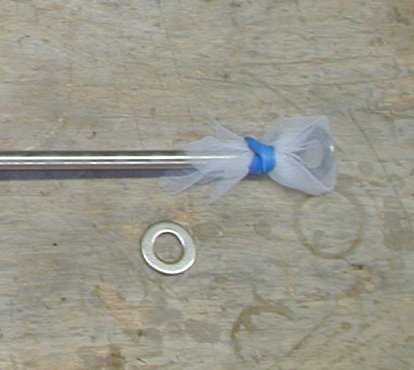After some experimenting the past 2 years, I've devised methods to be able to perform closed or near-closed transfers from buckets into kegs. This can be adapted to transfers into bottling buckets too.
Air free (oxygen free) transfers are crucial for NEIPAs, IPAs and other hoppy beers, but basically benefit any beer, preventing or at least limiting oxidation.
1. Semi-closed transfer:
This 1" access hole is also used for adding dry hops, sugar syrups, or other additions to an active fermentation bucket under CO2. This is because while working CO2 is streaming in through the airlock stem, on the other side of the lid, into the headspace.
The access also allows me to use the back end of my long plastic brew spoon (it has a small rectangular paddle) to stir once or twice a day after dry hopping, or adding fruit etc.
Air free (oxygen free) transfers are crucial for NEIPAs, IPAs and other hoppy beers, but basically benefit any beer, preventing or at least limiting oxidation.
1. Semi-closed transfer:
- Remove the lid from the bucket.
- Insert the racking cane halfway between the beer level and the trub layer, using a bucket clamp to keep the cane in place along the side. Start the siphon.
- Beer gets racked into a 100% liquid pre-purged keg through the liquid QD by gravity/siphon action.
- CO2 escapes the closed keg through the open PRV or an open gas QD, as the keg fills.
- Beer is still exposed to air because the bucket is open, lid is off. But it's only for 10-15 minutes.
- The bucket lid remains closed.
- It has the regular 3-piece airlock mounted.
- Plus it has a 2nd, 1" access hole on the opposite side of the lid, normally stoppered with a solid bung, now containing a drilled stopper with the racking cane.
- Once you start the siphon, beer goes into a 100% liquid pre-purged keg through the liquid QD by gravity/siphon action.
- While it fills with beer, the CO2 from the keg is pushed out the gas QD, which has tubing connected to the airlock stem on the bucket lid.
- The bucket headspace fills with CO2 from the keg as the beer level drops.
- Same setup as 2.
- With low CO2 pressure on the airlock stem, push the beer through the racking cane, tubing, and liquid QD into a 100% liquid pre-purged keg.
- CO2 from the keg vents through the gas QD or PRV.
- Once the siphon starts, you could route the keg's CO2 back into bucket headspace through the airlock stem, while disconnecting the CO2 from the tank. That would save 4-5 gallons of tank CO2.
This 1" access hole is also used for adding dry hops, sugar syrups, or other additions to an active fermentation bucket under CO2. This is because while working CO2 is streaming in through the airlock stem, on the other side of the lid, into the headspace.
The access also allows me to use the back end of my long plastic brew spoon (it has a small rectangular paddle) to stir once or twice a day after dry hopping, or adding fruit etc.













![Craft A Brew - Safale S-04 Dry Yeast - Fermentis - English Ale Dry Yeast - For English and American Ales and Hard Apple Ciders - Ingredients for Home Brewing - Beer Making Supplies - [1 Pack]](https://m.media-amazon.com/images/I/41fVGNh6JfL._SL500_.jpg)












































